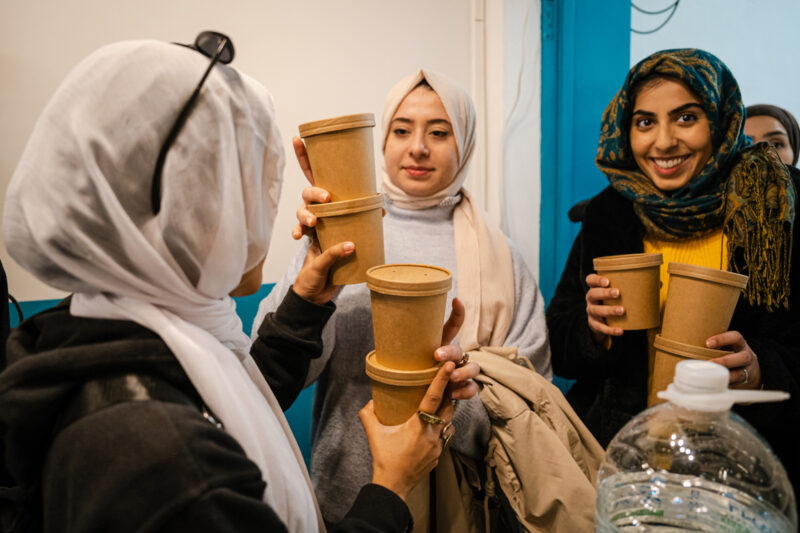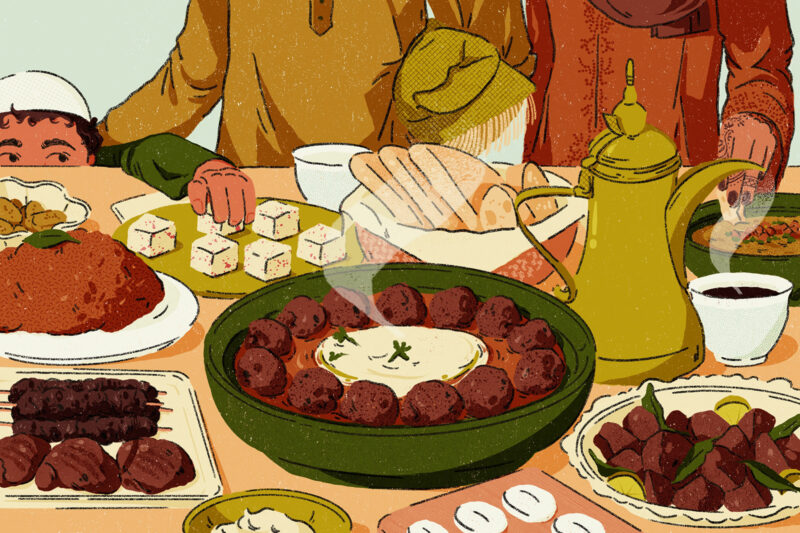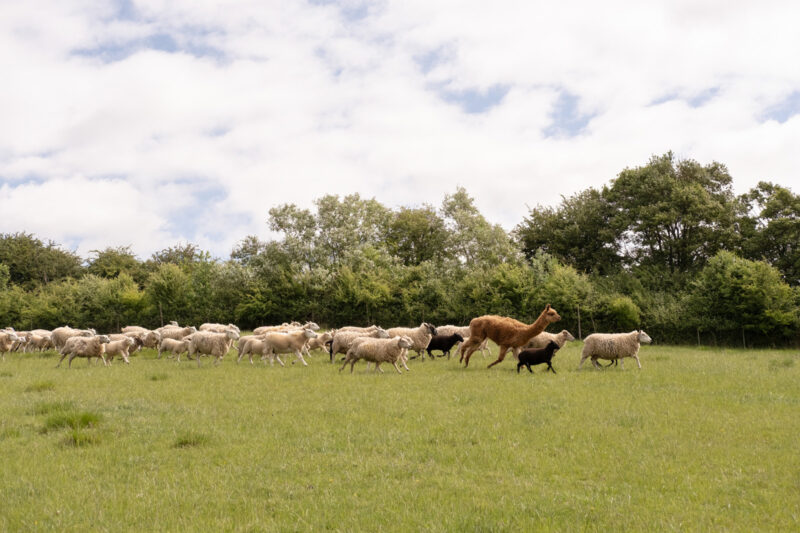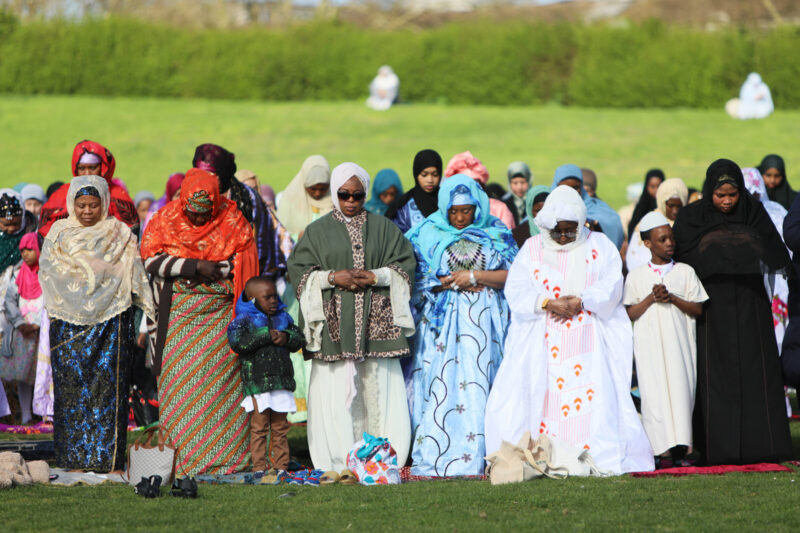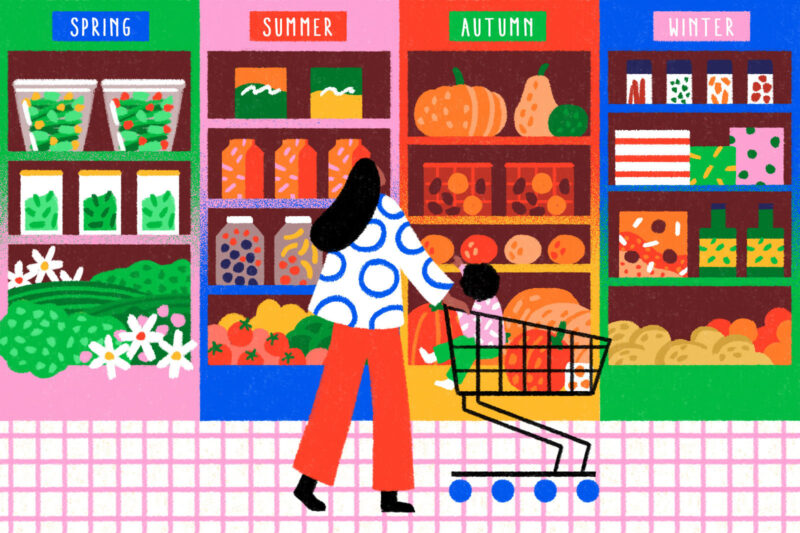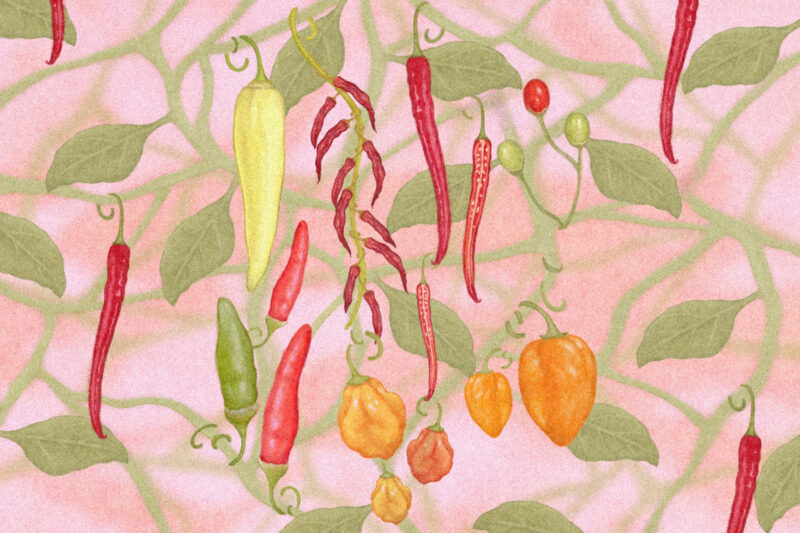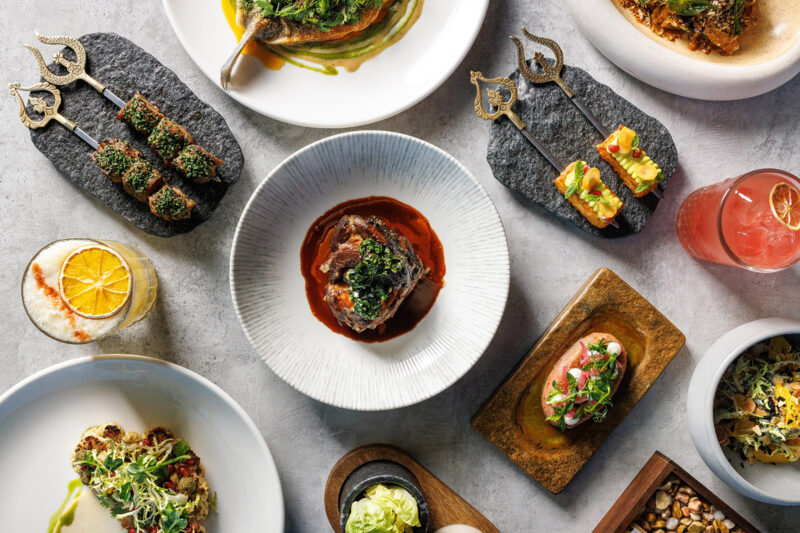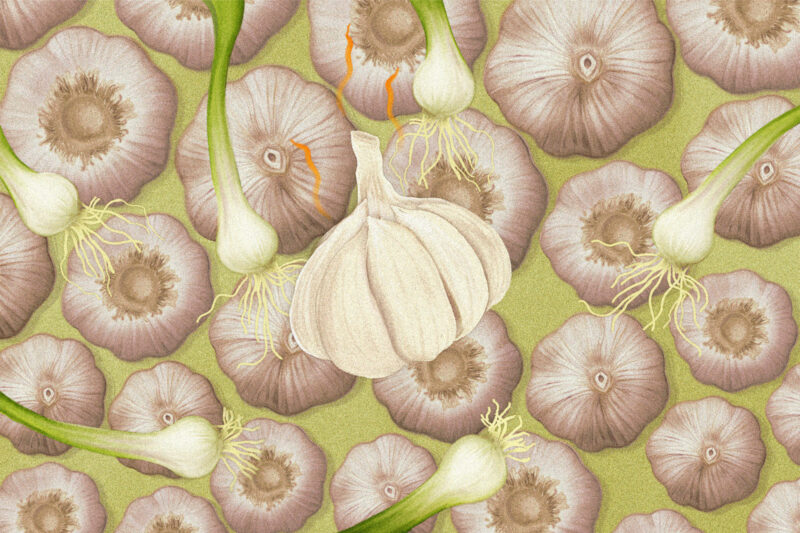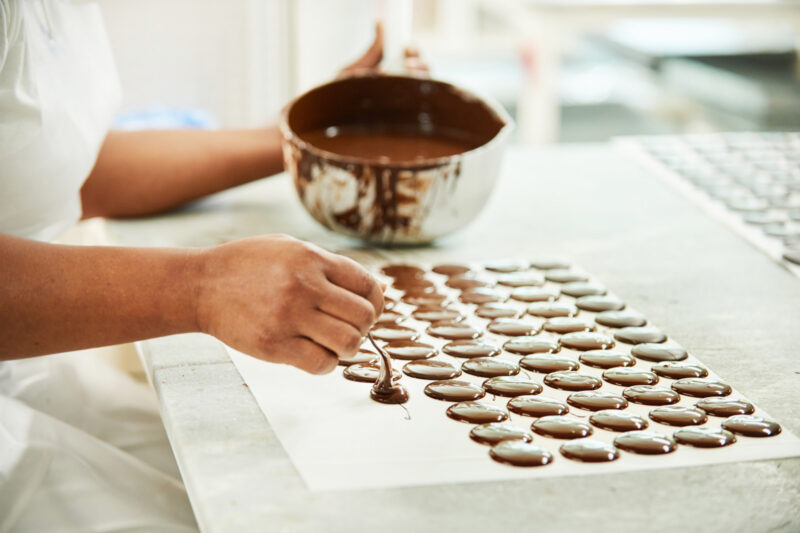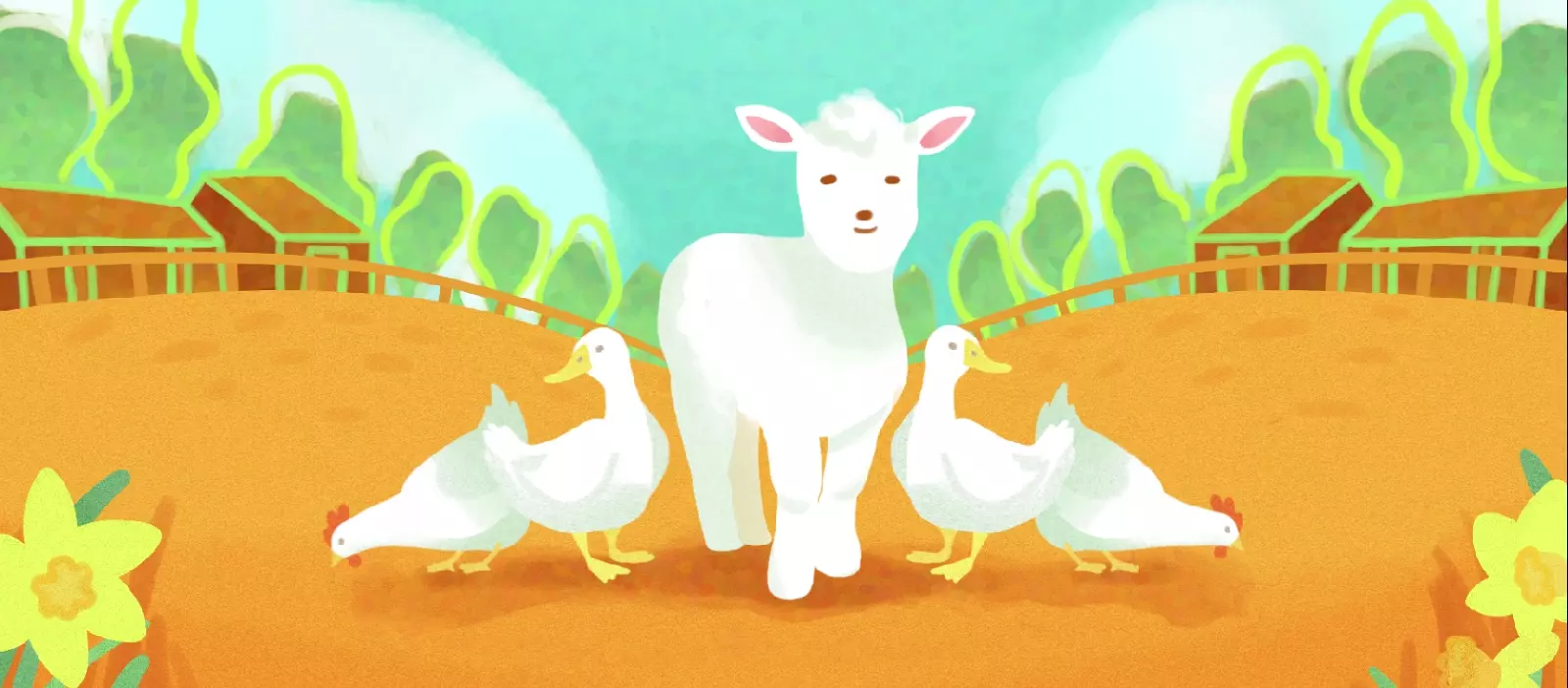
Eid al-Adha is a time to share and remember where our food comes from
The ritual sacrifice at the heart of the celebration teaches valuable lessons about sustainability
–
In cultures all over the world, eating and acts of celebration go hand in hand. From new years and first harvests to births, marriages and anniversaries, people of all nations and faiths mark out the rhythm of their lives with an endless array of delicacies. It’s one of the most glorious things about being human: the way we come together with friends and loved ones to make merry and make food.
The two major celebrations in the Islamic calendar — Eid al-Adha and Eid al-Fitr — go even further, with food and our relationship with it central to the religious significance of both.
Eid al-Fitr comes at the end of a whole month of fasting, which reminds us that, while we can bring Ramadan to a close by feasting, for some, hunger is a year-round reality with no potential end. This month, Muslims will celebrate Eid al-Adha. The story goes that Allah commanded the prophet Ibrahim to sacrifice his own son as a test of obedience and, on seeing that he was prepared to obey such an impossible instruction, showed mercy and told him to slaughter a sheep instead.
To commemorate this, Muslims observe a ritual known as qurbani. Those with the means to, will slaughter an animal — often a sheep or goat — and distribute two-thirds of the meat to people in need. In doing so, we remember Allah’s mercy and Ibrahim’s obedience. For many living in the West, qurbani is performed remotely. Individuals donate money to relatives or communities overseas, paying for the sacrifice to be carried out on their behalf. For many poor families across the world, this is the only time of year that they get the opportunity to eat meat. Every year, I find myself reflecting on the role of ritual sacrifice in Islam and what, if anything, it can show us about the ethics of consuming meat responsibly.
I remember the moment when I first truly understood that the food on my plate had once been a living, breathing creature. It was at my grandparents’ home in Manchester and I must have been about eight years old. Nanu and Nana Bhai had been rearing two ducks in their back garden for months, fattening them up to be the centrepiece of a family feast.
I was giddy with excitement. This was the 1990s and options for halal meat in Britain were limited. There was chicken and there was lamb. Beef was rarely available, owing to the BSE crisis that had hit the nation at the time. The thought of having something as exotic as duck, which I had only read about in cookery books, was thrilling.
The day finally came when my grandfather declared that the ducks were ready for slaughter. I saw my uncle sharpening a long knife. At the bottom of the garden, the birds were killed according to halal laws: a single slit to the throat severed the windpipe and artery, and the ducks swiftly bled to death. I wasn’t allowed to watch, but I did insist on helping afterwards. Plucking them, I felt like the heroine of my own period drama. I remember the scent of the oily feathers and how my grandmother singed off the stubborn tufts that remained with a candle.
My aunts prepared an incredible spread. The ducks were roasted with the skin on and served alongside platters of pilau rice, lightly spiced vegetables and a thick bhuna sauce of slow-cooked tomatoes and onions, made fragrant with whole spices: woody cinnamon, bay leaf and cardamom. My sister and I set the table with the fancy china. We sat down to eat later than usual — gutting and butchering adds time to the preparation of a meal — and I was ravenous. But when I saw the ducks in all their crisp, marinated glory, my appetite disappeared. I picked miserably at a potato, unable to shake the smell of the feathers from my fingers.
I struggled to understand my discomfort. I had known for a long time that the meat on my plate had once been a walking, breathing creature, but there is a big difference between knowing something and understanding it. While I wasn’t ethically opposed to eating meat, like so many kids growing up in the West, I had never been so exposed to what it really meant.
Unlike my cousins in Bangladesh, we did not rear the chickens that would ultimately become our food, or feed the goats that would one day be central to our Eid dinner. It was the first time that I had seen the whole process from beginning to end and could fully grasp my place in it all. Meat was not something that was vacuum packed in plastic and found in the refrigerator section of the supermarket, it was a once-living thing that was, as I discovered when I was plucking those ducks, still warm from the blood that once coursed through its veins.
Witnessing animals being slaughtered for food gave me a deeper understanding of why strict rules regarding the consumption of meat exist in Islam. It also made me consider whether we, as a broader society, would instinctively eat more sustainably if we were not so distanced from the many processes that lie behind this one simple, everyday act. After all, if we had to raise, slaughter and butcher every lamb, chicken or cow that we intend to eat, the labour alone would probably be enough to make us undertake the task less frequently.
I also wonder how much contemporary industrial farming techniques comply with the religious definition of halal meat. Many Muslims are aware of the technical rules of halal slaughter: that the animal should be killed by a single cut to the throat, delivered in the name of Allah, and that the blood must be fully drained. Fewer of us, however, are quite as vigilant regarding Islamic guidance on animal welfare. Animals reared for our consumption are supposed to be treated with the utmost care, well fed, and in good health. (Not something that can be said for industrially farmed chickens, which often suffer broken legs or wings from overcrowding.) They are also not supposed to witness another animal being killed, which renders the mechanical slaughter methods of most modern abattoirs questionable.
It is not with joy or thoughtlessness that Islam sanctions the killing of animals for food. Rather, it is with intention and consideration. Invoking the name of God at the time of slaughter shows the seriousness with which we are supposed to approach eating meat. During Eid Al-Adha, this is taken a step further. While performing the sacrifice, we are told to remember the prophet Ibrahim and the weight of God’s commandment to him. The significance is that killing a living creature is never to be done lightly.
However, it is perhaps the very notion of ritual slaughter that stokes so much of the criticism of halal meat in the UK and Europe. Linking the killing of an animal to religion may, somehow, be even more unpalatable to a secular society than doing so for commercial gain. Tabloid hysteria around the subject reached a peak in the UK about a decade ago, with an avalanche of articles that used animal welfare as a veil for Islamophobia and sought to make the word “halal” synonymous with “cruelty” and “otherness”.
While the sensationalist headlines are now less frequent, that idea has taken root in certain sections of the wider British consciousness. One of the most disappointing things about this is that it prevents a conversation that is important for Muslims and non-Muslims alike from taking place: how can we sustainably, responsibly and ethically produce and consume meat? It could also be argued that by ritualising slaughter — as Muslims and Jews do — we are paying increased ethical attention to the process and affording greater respect to every animal we eat.
For me, Eid al-Adha underlines these ideas and provides a simple illustration of how anyone who chooses to eat meat should approach it: with reverence and gravity, and on a smaller and much more sustainable scale. Meanwhile, the ritualised sharing of meat with people in need demonstrates that we have a responsibility to help our neighbours, especially when we are feasting ourselves.
 Newsletter
Newsletter

